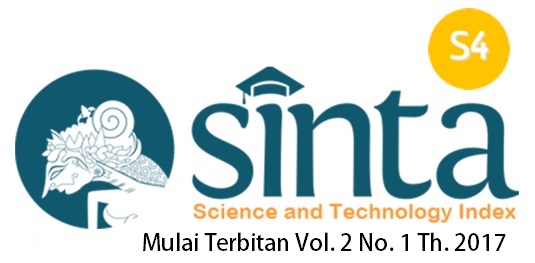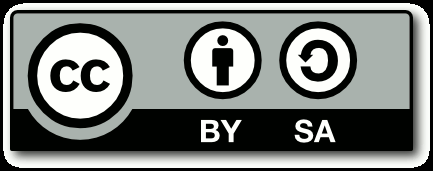Perancangan Game Pengenalan Sampah Berbasis Android Untuk Meningkatkan Pemahaman Siswa Terhadap Jenis-Jenis Sampah
Abstract
Meningkatkan jumlah sampah yang didaur ulang merupakan satu langkah penting menyelamatkan lingkungan. Untuk bisa meningkatkan jumlah sampah yang bisa didaur ulang bisa dilakukan dengan memilah sampah berdasarkan jenisnya. Proses memilah sampah memerlukan pengetahuan jenis-jenis sampah yang ternyata masih minim dimiliki, khususnya oleh anak umur 6-12 tahun. Penelitian ini bertujuan mengembangkan media pembelajaran persuasif untuk anak-anak, berupa game yang didalamnya secara tidak langsung mengajari anak-anak mengenali jenis-jenis sampah. Tujuan selanjutnya yaitu menguji game apakah bisa meningkatkan pemahaman anak. Untuk itu game diujikan pada 20 anak dengan rentang 6-12 tahun. Hasil pengujian menunjukkan nilai correlations (r) sebesar 0,864, dan (r)2 sebesar 0.746 atau 74.6 %, yang menunjukkan peningkatan pemahaman siswa sebesar 74.6% . Nilai signifikansi yang diperoleh adalah 0.000, dimana nilai signifikansi yang lebih kecil dari 0.005 menunjukkan bahwa game identify trash dapat meningkatkan pemahaman siswa secara signifikan.
_________________________________________________
Abstract
Increasing the amount of recycled waste is an important step to save the environment. To be able to increase the amount of waste that can be recycled, it can be done by sorting waste by its type. The process of sorting out the garbage requires knowledge of the types of waste. In fact, that knowledge is still minimal, especially for children aged 6-12 years. This study aims to develop persuasive learning media for children, a game which indirectly teaches children to recognize the types of garbage. The next goal is to test the game whether it can improve children's understanding. The game was tested on 20 children with a range of 6-12 years. The test results show the value of correlations (r) of 0.864, and (r) 2 of 0.746 or 74.6%, which shows an increase in student understanding of 74.6%. The significance value obtained is 0,000, which is smaller than 0.005, indicating that the game can significantly improve student understanding.
Keywords
Full Text:
PDFReferences
Suara Pembaharuan, “Bijak Tangani Plastik: Dua Kota Indonesia Produksi 1,3 Juta Ton Sampah,” Kesra. p. 20, 2018.
J. Kirriemuir and A. McFarlane, “Literature Review in Games and Learning,” A NESTA Futur. Res. Rep. - Rep. 8. 2004., pp. 1–40, 2004.
D. S. Vogel, J. A. N. Cannon-bowers, and C. A. Bowers, “Journal of Educational Computing Research-2006-Vogel-229-43,” vol. 34, no. 3, pp. 229–243, 2006.
S. Tobias and J. D. Fletcher, “Research on using computer games for instruction,” no. January 2011, 2012.
R. Sandford, M. Ulicsak, and K. Facer, “Teaching with Games: using computer games in formal education,” Futur. Bristol, pp. 1–39, 2006.
A. Piirainen-Marsh and L. Tainio, “Collaborative game-play as a site for participation and situated learning of a second language,” Scand. J. Educ. Res., vol. 53, no. 2, pp. 167–183, 2009.
Y. T. C. Yang, “Building virtual cities, inspiring intelligent citizens: Digital games for developing students’ problem solving and learning motivation,” Comput. Educ., vol. 59, no. 2, pp. 365–377, 2012.
T. De la Hera, “Persuasive Gaming: Identifying the different types of persuasion through games,” Int. J. Serious Games, vol. 4, no. 1, pp. 31–39, 2017.
S. Alazab, “Game Development life cycle,” Unity Game Dev. Self Employ., pp. 1–28, 2015.
H. Chandler, Fundamentals Of Game Development, Revision. Sudbury, United States: Jones and Bartlett Publishers, Inc, 2011.
M. Allen, “The SAGE Encyclopedia of Communication Research Methods.” Thousand Oaks, California, 2017.
Refbacks
- There are currently no refbacks.






